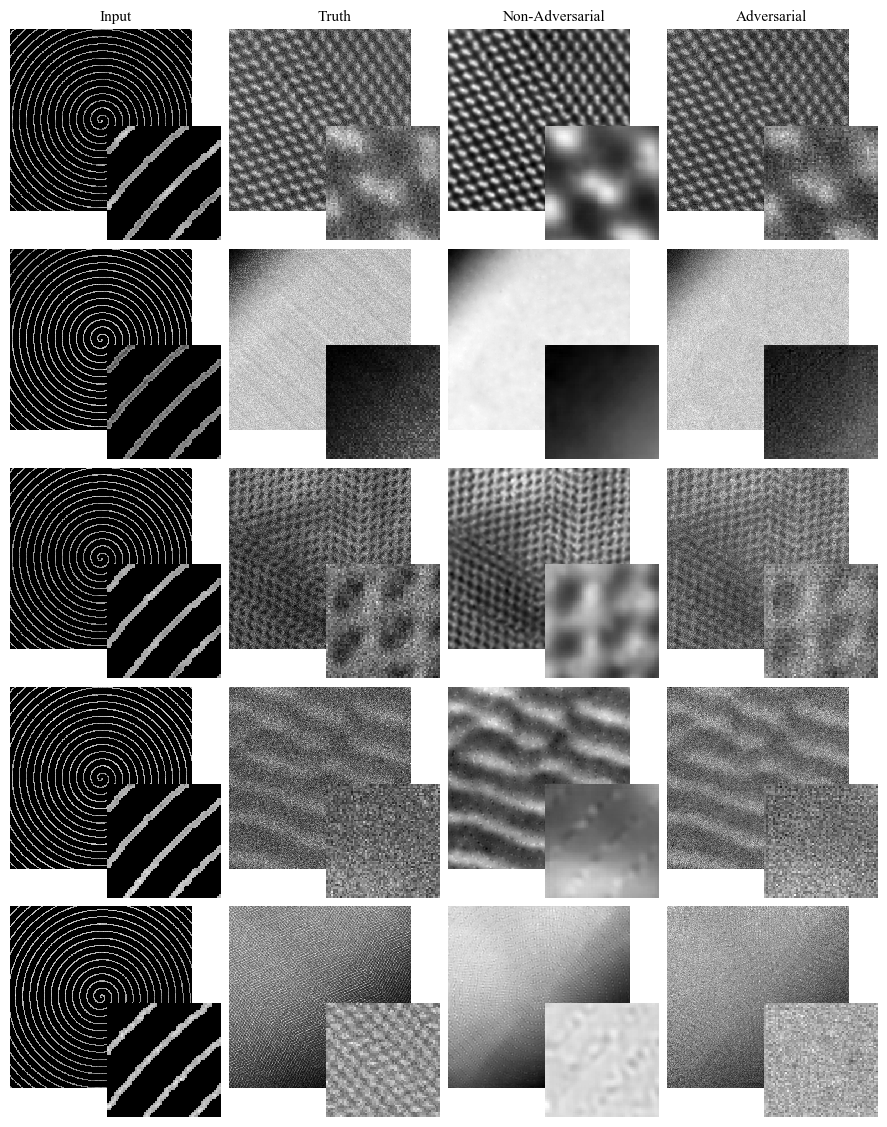Partial Scanning Transmission Electron Microscopy with Deep Learning
Compressed sensing algorithms are used to decrease electron microscope scan time and electron beam exposure with minimal information loss. Following successful applications of deep learning to compressed sensing, we have developed a two-stage multiscale generative adversarial neural network to complete realistic 512$\times$512 scanning transmission electron micrographs from spiral, jittered gridlike, and other partial scans. For spiral scans and mean squared error based pre-training, this enables electron beam coverage to be decreased by 17.9$\times$ with a 3.8\% test set root mean squared intensity error, and by 87.0$\times$ with a 6.2\% error. Our generator networks are trained on partial scans created from a new dataset of 16227 scanning transmission electron micrographs. High performance is achieved with adaptive learning rate clipping of loss spikes and an auxiliary trainer network. Our source code, new dataset, and pre-trained models have been made publicly available at https://github.com/Jeffrey-Ede/partial-STEM
PDF Abstract